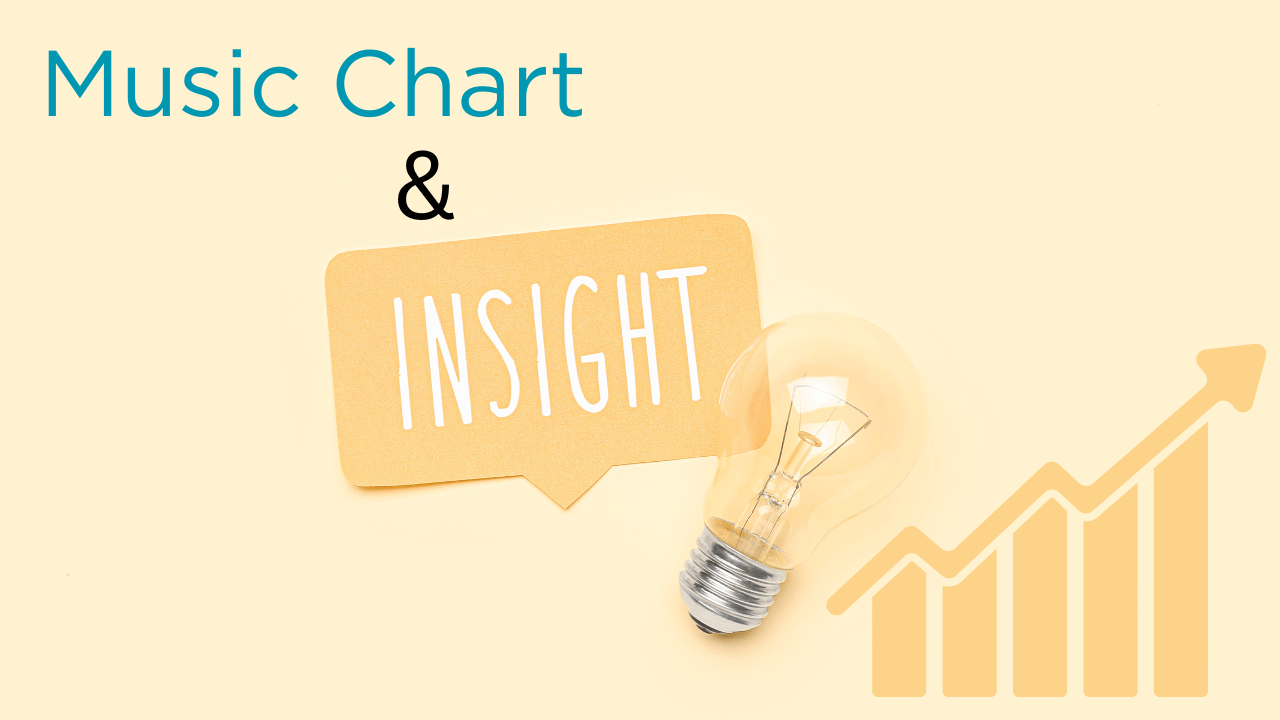In today’s digital age, understanding music charts and insights is crucial for musicians looking to navigate the industry and achieve success. These metrics provide valuable information about how your music is performing, who is listening, and where your audience is located. This blog will guide you through the importance of music charts and insights, how to interpret them, and how they can help shape your career. Whether you’re an emerging artist or an established musician, mastering these tools can unlock new opportunities and enhance your strategy.
What Are Music Charts & Insights?
Music charts and insights refer to the data and metrics that show how a song or album performs across various platforms. Charts typically rank songs based on factors like sales, streams, and airplay, while insights provide a deeper look into listener demographics, engagement, and behavior. For example, platforms like Spotify and Apple Music offer artists detailed analytics that can reveal patterns in streaming habits, geographical popularity, and audience demographics.
The Role of Music Charts
Music charts serve as a barometer for a song’s popularity and success. They can influence radio play, media coverage, and even award nominations. Some of the most well-known charts include the Billboard Hot 100, UK Singles Chart, and Spotify’s Global Top 50. These charts often consider various metrics like digital downloads, physical sales, streaming numbers, and radio airplay. Being featured on these charts can significantly impact an artist’s career by providing visibility and validation. For independent artists, landing a spot on a notable chart can lead to increased attention from record labels, booking agents, and other industry professionals.
Understanding Music Insights
While charts provide a snapshot of success, insights delve deeper into the data. Insights can include:
- Listener Demographics: Information about the age, gender, and location of your audience. This data is crucial for understanding who your music resonates with and can help in tailoring marketing strategies.
- Streaming Data: Details about the number of streams, top songs, and listener retention. Analyzing this data can help artists understand which tracks are performing well and why.
- Engagement Metrics: Data on how listeners interact with your music, such as playlist additions, saves, and shares. These metrics can indicate how engaged listeners are with your content and can guide future promotional efforts.
These insights help artists understand their audience better and tailor their promotional efforts accordingly. By analyzing this data, artists can make informed decisions about their career, from choosing the best release dates to planning marketing campaigns and tours.
How to Access and Use Music Charts & Insights
Accessing Music Insights
Platforms like Spotify for Artists, Apple Music for Artists, and YouTube Analytics provide comprehensive tools for accessing music charts and insights. These platforms offer dashboards where artists can view real-time data, historical trends, and in-depth analytics.
- Spotify for Artists: Offers a range of data, including pre-release stats, all-time pre-saves, and stream percentages. Artists can track the performance of individual tracks and compare them over time. Spotify also provides data on playlist placements, which can be a significant factor in driving streams and gaining new listeners.
- Apple Music for Artists: Provides analytics on plays, listeners, and song purchases. It also offers data on Shazam metrics, which can indicate potential breakout hits. Additionally, Apple Music allows artists to see the number of spins on Beats 1, giving insight into radio play.
- YouTube Analytics: Focuses on video engagement, providing insights into watch time, viewer demographics, and traffic sources. For artists who release music videos, understanding YouTube metrics is crucial for maximizing views and engagement.
Using Insights to Improve Your Strategy
Once you have access to your music charts and insights, the next step is to use this data to refine your strategy. Here are some tips:
- Identify Key Markets: Use geographical data to identify where your music is most popular. This can help you plan tours, target ads, and focus your promotional efforts. For example, if your music is trending in a specific city or country, you might consider scheduling a performance there or running localized social media ads.
- Analyze Listener Demographics: Understanding the age and gender of your audience can help you tailor your marketing messages and content. For instance, if a significant portion of your audience is in a younger age group, you might focus more on platforms like TikTok and Instagram, which are popular among younger users.
- Monitor Engagement Metrics: Track playlist additions, shares, and other engagement metrics to gauge listener interest and loyalty. This data can help you decide which songs to promote and when to release new content. For example, if a particular track is being added to many playlists, it might be a good candidate for a music video or additional promotion.
- Compare Performance Over Time: Use historical data to see how your music’s popularity evolves. Look for trends, such as seasonal spikes or declines, to better plan your releases. Understanding these patterns can help you optimize your release schedule to maximize impact.
By leveraging these insights, artists can not only improve their promotional strategies but also create more engaging content that resonates with their audience.
The Impact of Music Charts & Insights on an Artist’s Career
Boosting Visibility
A strong presence on music charts can significantly boost an artist’s visibility. High chart rankings often lead to increased media attention, radio play, and playlist placements, all of which can drive streams and sales. For instance, a song that charts on Spotify’s Global Top 50 is more likely to be featured in curated playlists, increasing its exposure to new listeners. This visibility can also attract the attention of industry professionals, such as booking agents and record labels, who are always on the lookout for emerging talent.
Guiding Creative Decisions
Music charts and insights can also influence an artist’s creative decisions. For example, if data shows that a particular genre or style is resonating with listeners, an artist might choose to focus on that sound in future releases. Similarly, insights into listener preferences can guide decisions about collaborations, cover art, and marketing strategies. For instance, if a collaboration with a particular artist led to a significant spike in streams, it might be worth considering future collaborations with that artist or others with a similar style.
Enhancing Fan Engagement
Engaging with fans is crucial for building a loyal audience. By understanding their audience’s preferences and behavior, artists can create more targeted and engaging content. For example, insights into the most popular songs in live performances can help artists craft setlists that resonate with their audience. Additionally, knowing which social media platforms their fans use the most can help artists focus their engagement efforts where they will have the most impact.
Artists can also use insights to understand the types of content that resonate most with their fans. For example, if behind-the-scenes content receives a lot of engagement, artists might consider sharing more of these types of posts. This engagement can help build a stronger connection with fans, making them feel more involved in the artist’s journey.
Challenges in Interpreting Music Charts & Insights
While music charts and insights offer valuable information, they can also be complex and challenging to interpret. Here are some common challenges:
- Data Overload: With so much data available, it can be overwhelming to know where to start. Focus on the most relevant metrics for your goals, such as stream counts, listener demographics, or engagement rates. It’s important to prioritize data that aligns with your specific objectives, whether that’s increasing streams, growing your fanbase, or improving engagement.
- Contextual Understanding: It’s important to consider the context behind the data. For example, a spike in streams could be due to a new playlist feature or a recent media appearance. Understanding these factors can provide a clearer picture of what’s driving your success. Without context, data can be misleading and may not accurately reflect the true impact of your music.
- Changing Metrics: The music industry constantly evolves, and so do the metrics used to measure success. Stay updated with the latest trends and tools to ensure you’re accurately interpreting your data. For example, as streaming becomes increasingly dominant, traditional metrics like album sales have become less relevant, while playlist placements and stream counts have gained importance.
Navigating these challenges requires a combination of data literacy and industry knowledge. Artists and their teams must stay informed about the latest trends and developments in music analytics to make the most of their insights.
Future Trends in Music Charts & Insights
As technology advances, the tools and methods for tracking music charts and insights will continue to evolve. Here are some trends to watch:
- AI and Predictive Analytics: Artificial intelligence will play a larger role in predicting trends and identifying potential hits. AI tools can analyze vast amounts of data to provide actionable insights, helping artists make more informed decisions. For example, predictive analytics can forecast which songs are likely to perform well based on historical data and current trends.
- Real-Time Analytics: The demand for real-time data will grow, allowing artists to react quickly to trends and optimize their strategies on the fly. Real-time analytics can help artists identify sudden spikes in streams or engagement, allowing them to capitalize on these moments with timely promotions or social media posts.
- Integration with Social Media: As social media continues to influence music discovery, integrating social metrics with traditional music charts will provide a more comprehensive view of an artist’s impact and reach. Platforms like TikTok and Instagram play a significant role in music promotion, and understanding the interplay between these platforms and streaming data will be crucial.
Conclusion
Understanding music charts and insights is essential for any artist looking to succeed in today’s music industry. By analyzing these metrics, artists can make informed decisions, refine their strategies, and connect more deeply with their audience. Whether you’re an aspiring musician or an established artist, leveraging music charts and insights can unlock new opportunities and propel your career to new heights. So, dive into the data, understand your audience, and make the most of the insights at your disposal.
This blog provides a comprehensive guide on the importance of understanding and leveraging music charts and insights for career growth in the music industry. The examples and case studies illustrate how different artists can utilize this data to enhance their strategies and connect with their audience effectively.
For further reading, explore these related articles:
- How to Get Your Music Video on YouTube Charts
- How to Use Apple Music’s Promo Tools for Your Releases
- 40 Ways to Earn Money as a Musician
For additional resources on music marketing and distribution, visit Deliver My Tune.






